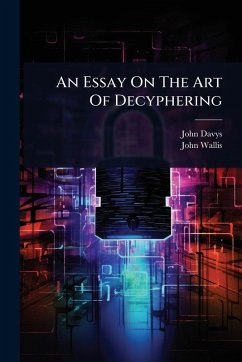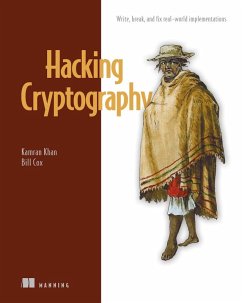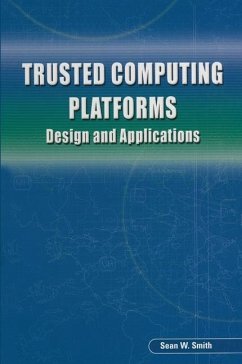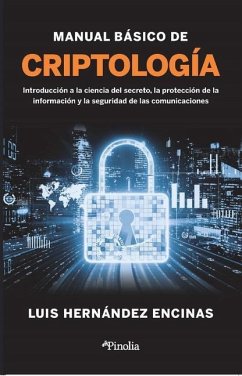
Simple Public Key Infrastructure Analysis Protocol Analysis and Design

PAYBACK Punkte
8 °P sammeln!
Secure electronic communication is based on secrecy, authentication and authorization. One means of assuring a communication has these properties is to use Public Key Cryptography (PKC). The framework consisting of standards, protocols and instructions that make PKC usable in communication applications is called a Public Key Infrastructure (PKI). This thesis aims at proving the applicability of the Simple Public Key Infrastructure (SPKI) as a means of PKC. The strand space approach of Guttman and Thayer is used to provide an appropriate model for analysis. A Diffie-Hellman strand space model i...
Secure electronic communication is based on secrecy, authentication and authorization. One means of assuring a communication has these properties is to use Public Key Cryptography (PKC). The framework consisting of standards, protocols and instructions that make PKC usable in communication applications is called a Public Key Infrastructure (PKI). This thesis aims at proving the applicability of the Simple Public Key Infrastructure (SPKI) as a means of PKC. The strand space approach of Guttman and Thayer is used to provide an appropriate model for analysis. A Diffie-Hellman strand space model is combined with mixed strand space proof methods for proving the correctness of multiple protocols operating in the same context. The result is the public key mixed strand space model. This model is ideal for the analysis of SPKI applications operating as sub-protocols of an implementing application. This thesis then models the popular Internet Transport Layer Security (TLS) protocol as a public key mixed strand space model. The model includes the integration of SPKI certificates. To accommodate the functionality of SPKI, a new protocol is designed for certificate validation, the Certificate Chain Validation Protocol (CCV). The CCV protocol operates as a sub-protocol to TLS and provides online certificate validation. The security of the TLS protocol integrated with SPKI certificates and sub-protocols is then analyzed to prove its security properties. The results show that the modified TLS protocol exhibits the same security guarantees in isolation as it does when executing its own sub-protocols and the SPKI Certificate Chain Validation protocol. This work has been selected by scholars as being culturally important, and is part of the knowledge base of civilization as we know it. This work was reproduced from the original artifact, and remains as true to the original work as possible. Therefore, you will see the original copyright references, library stamps (as most of these works have been housed in our most important libraries around the world), and other notations in the work. This work is in the public domain in the United States of America, and possibly other nations. Within the United States, you may freely copy and distribute this work, as no entity (individual or corporate) has a copyright on the body of the work. As a reproduction of a historical artifact, this work may contain missing or blurred pages, poor pictures, errant marks, etc. Scholars believe, and we concur, that this work is important enough to be preserved, reproduced, and made generally available to the public. We appreciate your support of the preservation process, and thank you for being an important part of keeping this knowledge alive and relevant.












